UPDATE:
Bernardsville, New Jersey’s Meadowbrook Farm is in the News
The Bernardsville Board of Adjustment Application for what appeared to be a subdivision request has shifted to a number of new deed requests with deed restrictions to align with the request to divide the farm for the three children noted in Bertha Ruschmann’s estate. The board will meet again on Monday, July 14, 2025, to review the new deed requests. A key sticking point is creating a new deed that establishes a new designation for the 137-acre glitter factory site, which a family member says should be limited to 6.5 acres. The MLHP will continue to follow developments and monitor local social media.
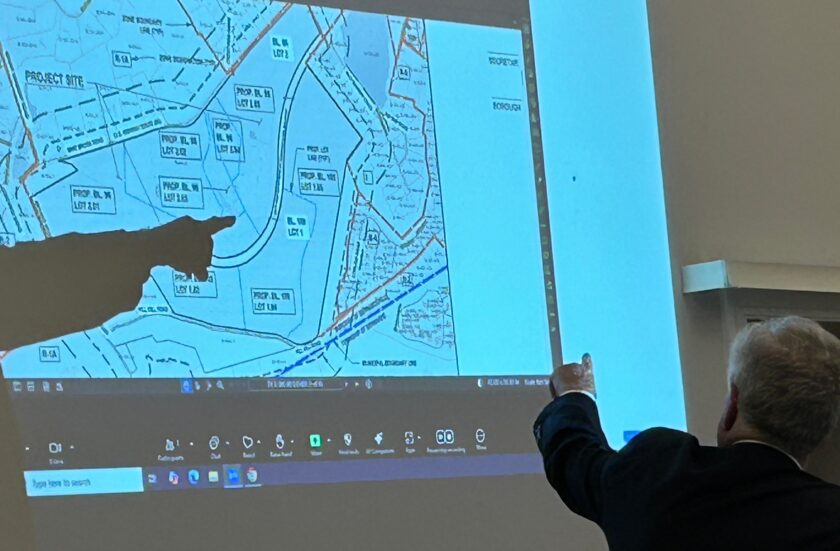
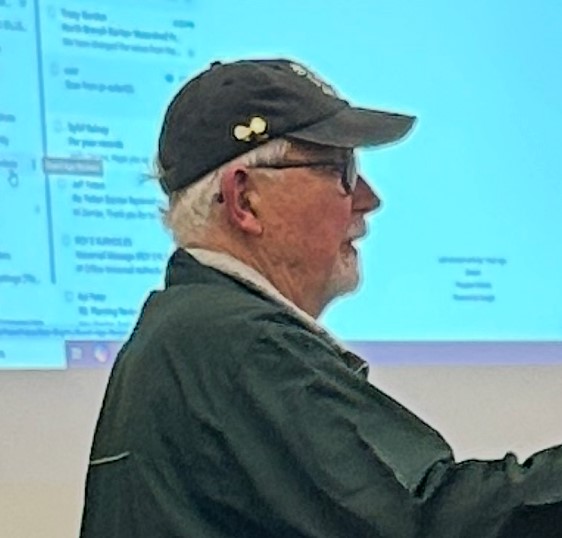
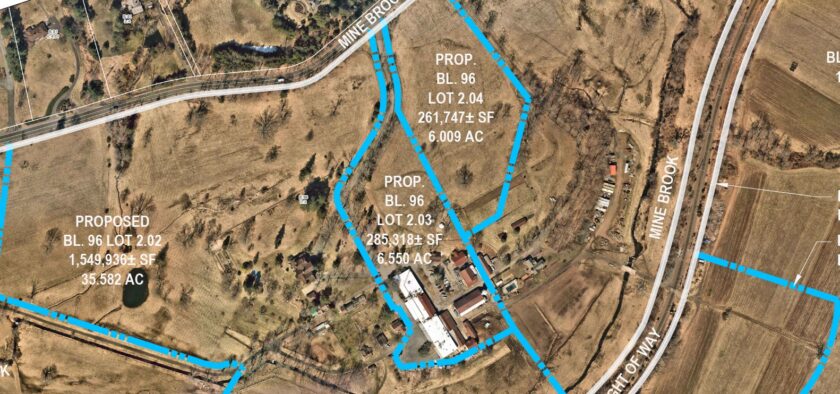
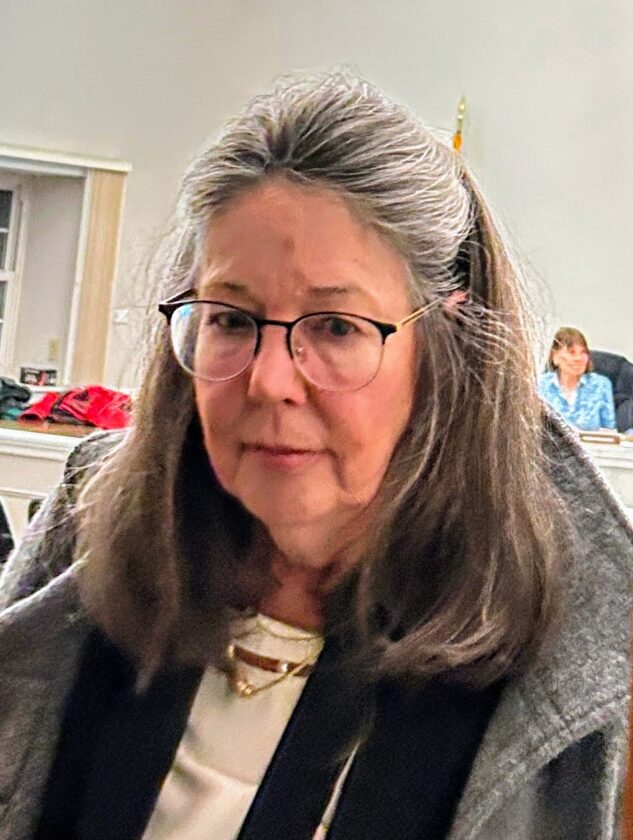
RETROSPECTIVE:
Mr. Local History Research Team
As with all Mr. Local History retrospectives, we often update the post when we learn stories and are sent photos from our internet community. We will continue to grow this piece as information becomes available. If you have a comment or photo, feel free to post at the bottom of this page or drop us a note.
All That Glitters is About Bernardsville, New Jersey’s Local History
Yes, it sounds shocking, but the center of Glitter’s universe has been Bernardsville, New Jersey, for a long, long time. So, Mr. Local History researchers got together and began digging in. Here’s the history.
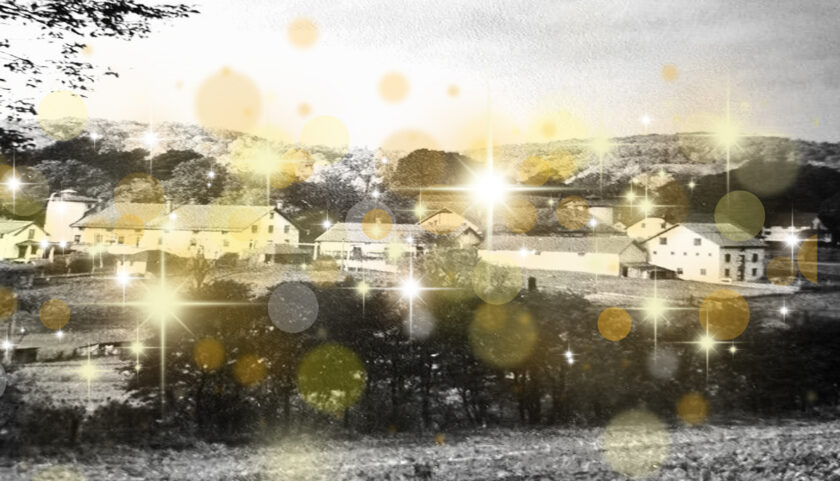
First, Let’s Talk About Glitter
Glitter comprises hundreds, even thousands or tens of thousands, of tiny pieces of various materials. Common glitter materials include copolymer plastics, aluminum foil, titanium dioxide, and iron oxides. These materials are usually produced in thin sheets painted with bright metallic or iridescent colors reflecting light. The sheets are then cut up into tiny pieces to make glitter that sparkles brightly when its many pieces reflect light in a colorful spectrum. The first production of modern plastic glitter is credited to the American machinist and Bernardsville, NJ farmer Henry Frank Ruschmann.
The beauty and cosmetics industry is one of the leading global consumers of glitter. Glitter is a staple ingredient in makeup products such as eyeshadows, lip glosses, nail polishes, and body shimmer. Fighter jets: Most military aircraft have chaff tubes, “millions of tiny aluminum—or zinc-coated fibers,” to boggle radar-guided missiles and tracking systems. Fishing lures: Glitter is undoubtedly a component in many plastic fishing lures. And yes, Money: To make it hard to counterfeit and give it a cool look. Tell us in the comments section below about your best glitter application story!
My sister loves glitter. She puts it in greeting cards and sends in the mail. When you open it, glitter goes everywhere and stays for weeks!
Brooks Betz, Researcher
Introducing Meadowbrook Glitter
Nestled in the Mine Brook River valley in the quiet little boro of Bernardsville, New Jersey, lies a beautiful picturesque pasture with milk heifers and purebred Guernsey cattle feeding in the valley of the Mine Mountain in what’s known also as the Somerset Hills. The dairy business is shuttered, but around seventy-five Herefords and Guerneseys remain.
While the Mine Brook meanders and the train passes by on the hour, many people don’t know that the oldest and once the largest glitter manufacturer in the world is hidden among the trees on Bernardsville’s Meadowbrook farm. Often referred to as the Meadowbrook Glitter Factory, Meadowbrook Innovations sits at the base of what local kids remember as the iconic sledding “suicide hill or dead man’s hill” that starts at the top of Pill Hill Road heading north downhill into the valley of the blue hills. Let’s see what we can learn from a visit to this historic, hidden Jersey gem.
Mr. Ruschmann originally called his sparkly cuttings “Schnibbles” and later “Metallic Jewels.”
Meadowbrook Farm History
Before talking about glitter and Mr. Henry F. Ruschmann, we thought it’d be fun to take you back to the beginning of Meadowbrook Farm, long owned by Richard Vliet Lindabury Esq (1850-1925) and his Lindabury family. During the late 1800s, the farm was much more extensive, once over 1,000 acres, and it included the Bernardsville Town Hall and pond.
The Lindabury children would subdivide the tract before the 200+ acre farm was purchased by Ruschmann in 1943.
Lindabury was one of America’s first Guernsey breeders and had the oldest accredited Guernsey herd in the United States right here in Bernardsville, New Jersey.
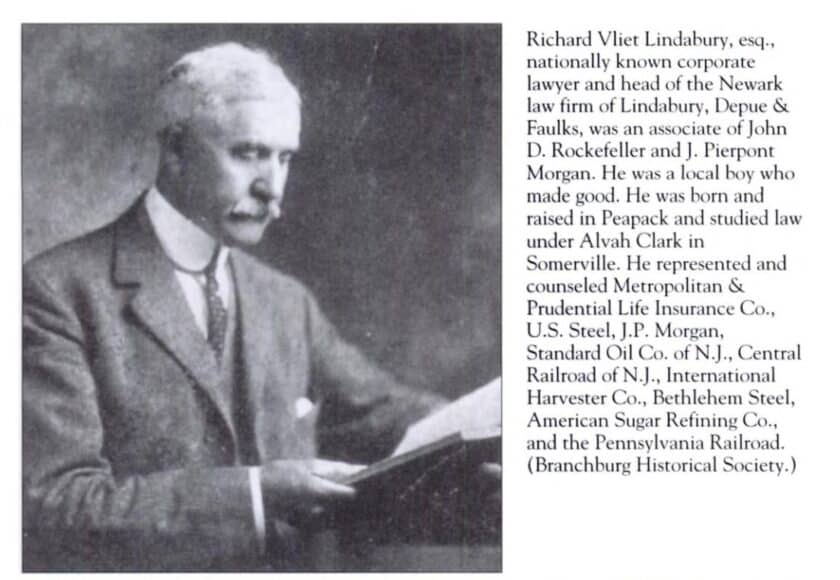
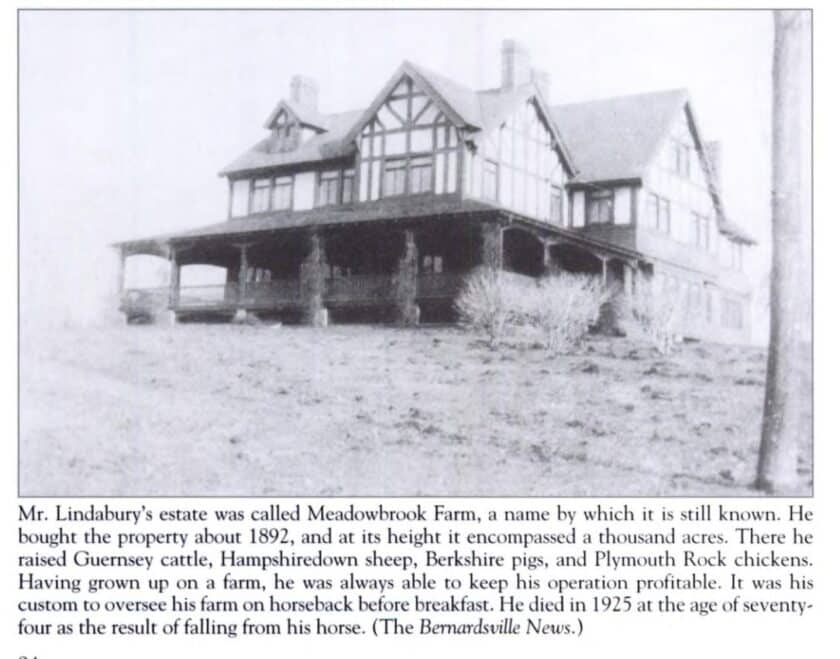
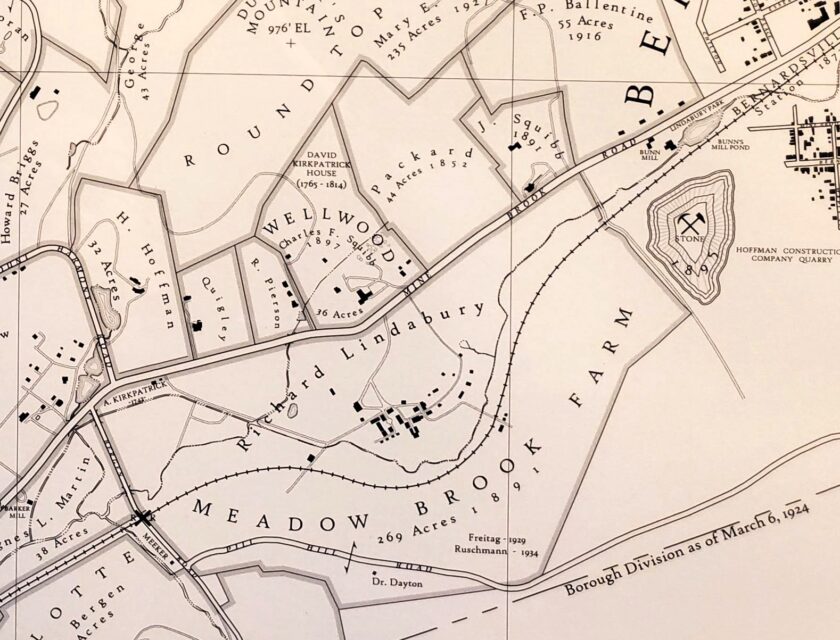
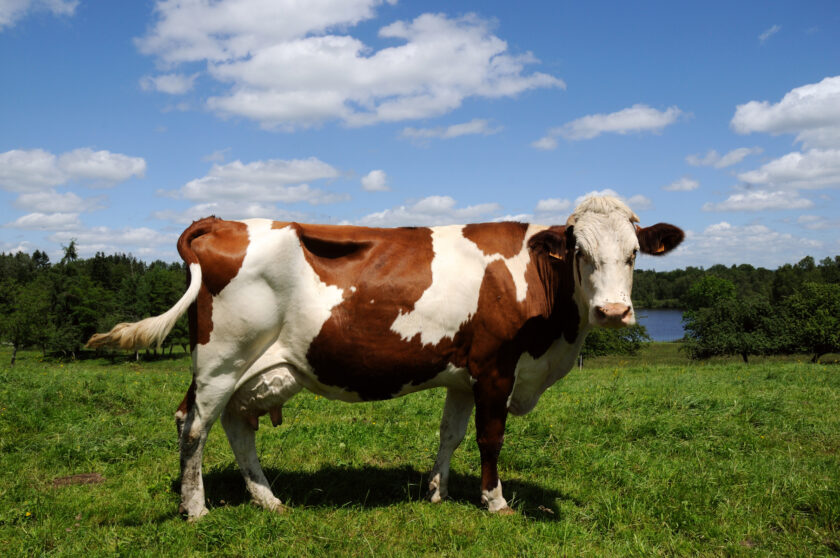
Beginnings – The Product and the Machine
The history of Meadowbrook’s glitter business began sometime before 1934 when Henry Frank Ruschmann invented a machine to cut plastic films into tiny pieces, eventually becoming glitter. When glass glitter became unavailable during World War II, Ruschmann found a market for grinding scrap plastics into glitter.
Mr. Ruschmann partnered with Harry Goetz and named their firm Goetz and Ruschmann in Maplewood, New Jersey. In 1943, Ruschmann bought Meadowbrook Farm in Bernardsville. While living on the Bernardsville farm, Ruschmann continued as a machinist in Maplewood, New Jersey but in 1948, Ruschmann moved his family from Union, along with a small machine from his Maplewood shop, into the family home at the Meadowbrook Farm to cut “glitter schnibbles” from plastic scrap. The cuttings would later help subsidize the farm’s dairy production and allow Ruschmann to continue to raise his Guernsey cows.

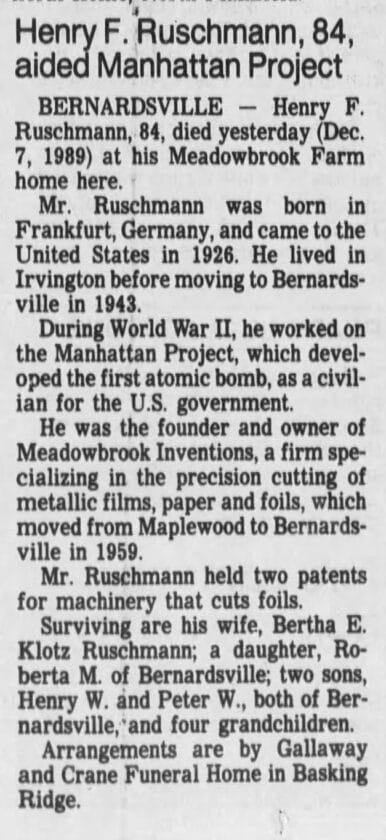
Two Glitter Patents
Ruschmann filed two essential patents accepted by the United States Patent Office in the early 1940s tied to glitter. The first was how to make the film strips, and the second was how to make them. Ruschmann invented and patented a high-speed machine that cut apart the developed glossy photo prints in roll form that consumers snapped with the familiar old Kodak Brownie box cameras. The cutting inscribed a grooved (deckle) edge for the consumer to tear photos from the small booklet into which the prints were clipped.
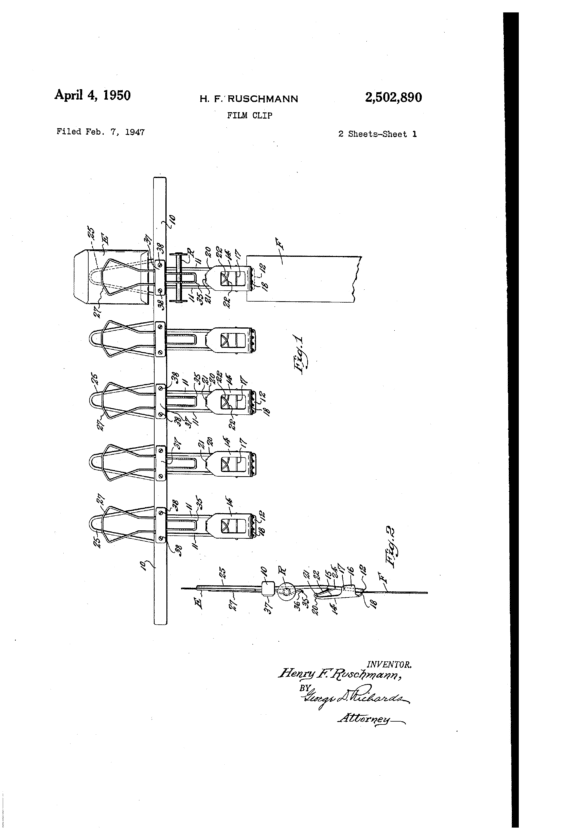
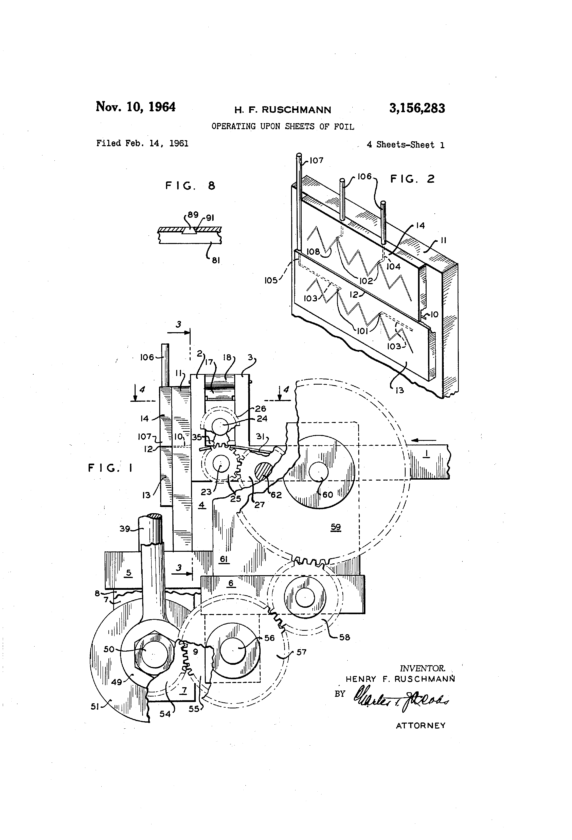
Patent US2502890A – Film Clip
In the handling of films for development thereof, it is the practice to simultaneously process :a number of film rolls or strips at one time, and at the same time maintain ownership identification of each film roll or strip throughout the process. To facilitate such practice, film suspension racks or hangers, for suspending the film rolls or strips in developer, washing, and fixing solution tanks, having means to also hold identifying data relating to the respective film rolls or strips have been utilized. It is an object of this invention to provide an improved and simplified construction of film suspension rack or hanger for this purpose.
US Patent Abstract – US2502890A – Details
Patent – US3650168A – Operating upon strips of thin material
A rotary slitter, for slitting a strip of thin material into narrower ribbons and establishing the speed of travel of those ribbons, is provided with output-disengaging means of dynamic nature, moved by and with the elements of the slitter, enabling the minimization of tension on the exiting ribbons. A pair of ribbon-engaging rollers, driven at a peripheral speed slightly greater than the speed of travel of the ribbons, receives the ribbons from the slitter in side-by-side relationship and under slight tension. From the rollers the ribbons may optionally pass to an anvil member with which a cutter cooperates to cut the ribbons into discrete small pieces.
US Patent Abstract – US3156283A – Details
Ah, the glitter factory! Every time I picked up their UPS shipment of glitter filled cardboard barrels, I would find glitter on me, my clothes, and in my car for days. LoL.
Willie Dade, former UPS driver.
Henry Frank (Heinrich Franz) & Bertha Klotz Ruschmann
Henry Frank Rischmann (Heinrich Franz) was born in Frankfurt, Germany, and immigrated to the United States in 1926 at 21. He arrived in New York from Bremen, Germany, and was hired at the US pier as a machinist by the Westinghouse Company, Irvington, NJ. Ruschmann would choose to start his American journey in Irvington, New Jersey.
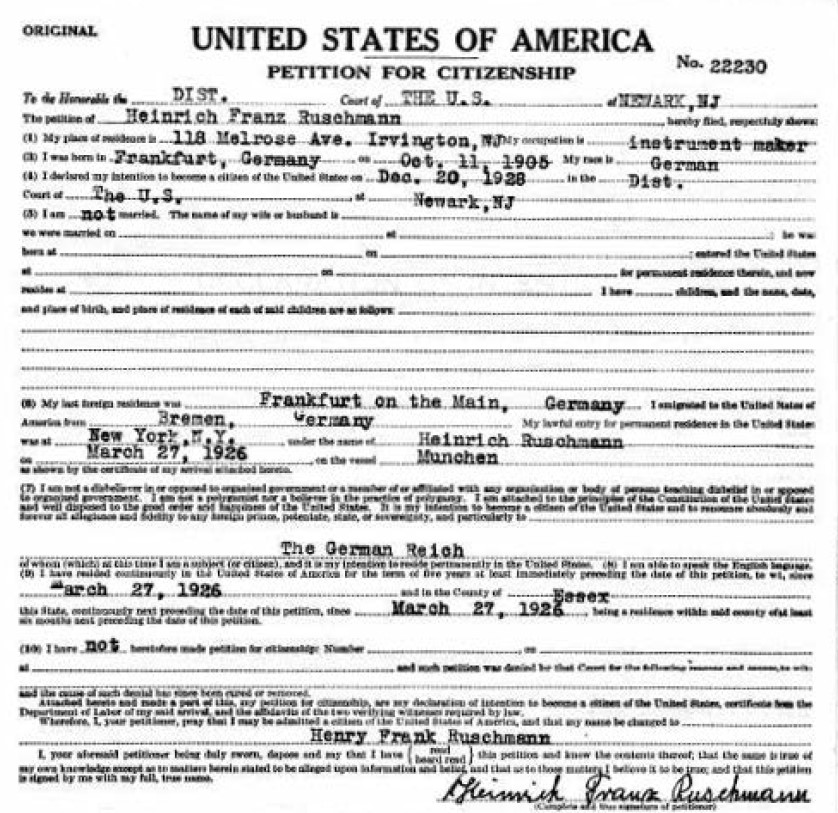
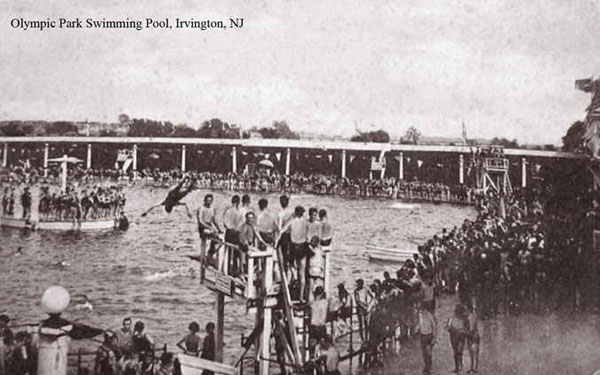
In March 1941, Henry and Bertha Elizabeth Klotz married. In 1943, after their search for a working farm, they pulled the trigger, purchasing Meadowbrook Farm, and moved to Bernardsville, New Jersey, to pursue careers in dairy and farming while still working as machinists. That same year, Ruschmann founded Meadowbrook Farm Inventions, Inc. (MFI) to produce his glitter. Starting in his son’s playroom, he later expanded to the nearby greenhouse as the business grew.
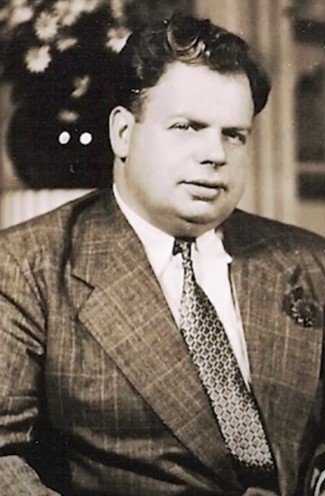
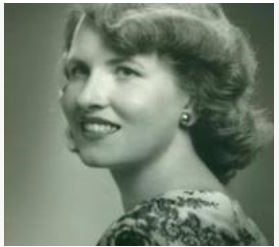
1917–2009 (91)
Henry contributed to the WWII war effort with his metals expertise and was part of the Manhattan Project. During World War II, he fabricated mica washers, which are critical components essential for developing atomic weapons. After the war, the Rrushmann family continued on the mission of what they referred to as “running a glitter factory to support the farm.” While running the two family businesses, they raised three children: Henry (Hank), Peter, and Roberta.
After Henry Sr.. passed away in 1981, his wife Bertha and the family continued the farm and factory for twenty-eight years until her passing in 2009. The factory and farm are still in the family’s hands.
“We all grew up on the farm. Bernardsville has always been close to our hearts. We all love the farm, nature and the animals. ” She studied farming and animal husbandry with her with 200 pure bred Guernsey cows. She also raised sheep, horses, Toulouse and Emden geese and chickens. She became an accomplished breeder of German Shepherds.
Bernardsville News
In the 1960s, son Henry W. Ruschmann joined Meadowbrook Inventions. As a 1960 Delbarton and Rutgers alumnus, he worked his way up to COO of product development, purchasing, and sales. In product development, he would source, for example, the most brilliant and weather-resistant aluminum and polyester and work with customers to design glitter for each customer’s process. In 1967, Henry W. developed what’s known as “Holographic glitter,” which embosses a diffraction grating (hologram) onto the film to reflect different colors of light in different directions, producing a rainbow effect.
In 1984, after work I would go home with glitter in my hair, pockets, everywhere. After the 5th day, I had enough! Six years later in 1990, when we ripped out the carpeting at my parents house, we found glitter under the carpets!
Steve Schwed – former Meadowbrook employee
While Henry became known to Bernardsville residents as the “Glitter Guy,” Henry Frank Ruschmann died on December 7, 1989, after a long illness. Bertha would continue operations until her passing in 2009.
Will the Farm and Factory Be Split Up?
According to recent filings from the estate of Mrs. Bertha Elizabeth Ruschmann, Roberta Ruschmann applied to the Bernardardsville Board of Adjustment in July 2024 to subdivide Meadowbrook Farm. An application to subdivide the 215-acre Meadowbrook Farm property on Mine Brook Road was submitted to the Board of Adjustment. While the plans called for the creation of three separate parcels and a total of eight lots, the family offered assurances to the public that nothing on the site would change, according to a spokesman for the Brach Eichler, LLC, of Roseland representing the Ruschmann filing. Discussions continued on April 7, 2025, with more discussions coming.
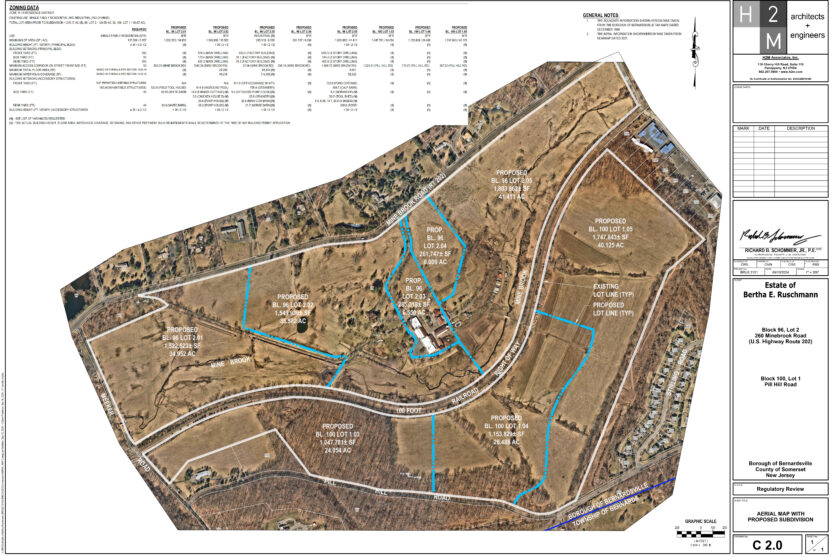
While Henry Sr.’s son, Henry (Hank) W. Ruschmann, has not been involved with the company since the early 2000s, he continues living on the farm property with his brother Peter. Daughter Roberta Ruschmann leads the privately held family company and continues to quietly and privately produce products and services. To say that there’s family strife would be an understatement.
Meadowbrook Industries Today
Today, Meadowbrook Inventions, Inc. is one of the world’s largest manufacturers of glitter and now operates from two New Jersey manufacturing plants: one at Meadowbrook Farm in Bernardsville and the other in Randolph. On average, Meadowbrook Inventions produces over two tons of glitter daily and controls almost 90% of the glitter world market. In addition to glitter, Meadowbrook produces effects like visual cues, geometric microparticles, and security taggants. Their glitter products are used in various applications, including cosmetics, adhesives, fashion, greeting cards, floral, fiberglass, craft, printing, and aerosols. The company has approximately 25 full-time employees.
The glitter factory has operated in a 45,000-square-foot industrial building in the center of the Bernardsville property. Currently, it consists of two lots: Lot 1, which fronts on Pill Hill Road, is 90.67 acres, and Lot 2, which fronts on Route 202, is 124.5 acres. The farm produces over 6,000 hay bails annually and still raises cattle.
Today, multiple firms worldwide manufacture over 20,000 varieties of glitter in different colors, sizes, and materials. One estimate suggests that 10 million pounds of glitter were produced between 1989 and 2009. And YES, Meadowbrook is the world’s pioneer of biodegradable glitter.
In a Johannesburg South Africa cafe, the gentleman next to me asked me where I was from (with my American accent). No one knows where Bernardsville is, right? After more discussion, I told him.
Merrill Farhat Medansky -1981
He responded with “Do you know Peter Ruschmann?” This guy in South Africa did business with the Ruschmann’s sequin factory. What a small world.
Bonus:
The “Good Shepherd” Watches Over Bernardsville from the Meadowbrook Farm
Driving along historic Route 202, you can still see Henry Robinson’s wood-carved ” The Good Shepherd” on the Meadowbrook Farm. Robinson’s second large outdoor project stood 24 feet tall in the Meadowbrook Farm field. Over 23 years, Harry created over 50 statues and was the only artist who created sculptures from dead trees. (More about Robininson’s carving career here).
The iconic shepherd was noted for looking over the Meadowbrook Farm and the Gentle Shepherd Nursery School children across the street.
We Leave You with This….
More MLH Local History Stories
More Bernardsville History Posts
Making That Christmas List Was Not a Click Away
Views: 181 …and some of the ways we’d all look for the best toys to put on our list. In the 1960s and 1970s, a Christmas list was something you… Read More »Making That Christmas List Was Not a Click Away
Meet (Sir) Francis Bernard Esq. – New Jersey’s Royal Governor
Views: 9,407 Our curiosity started with a round-table discussion: Who is Francis Bernard, and should there be a statue to recognize his service to New Jersey? Read the story and… Read More »Meet (Sir) Francis Bernard Esq. – New Jersey’s Royal…
Sir Francis Bernard Honored With American Town Names
Views: 5,307 Sir Francis Bernard’s Legacy Carries On as Towns Honor the Royal Governor of New Jersey and Massachusetts In 1758, Francis Bernard, originally from Lincolnshire, England, was appointed Governor… Read More »Sir Francis Bernard Honored With American Town Names
Retrospective: Lost & Torn Down Memories From the Somerset Hills
Views: 5,124 As with all Mr. Local History retrospectives, we often update the post when we learn stories and are sent photos from our community. We will continue to expand this… Read More »Retrospective: Lost & Torn Down Memories From the Somerset…
Book Remembering Bernardsville, New Jersey in the Gilded Age
Views: 1,876 This is a fantastic look into the history of the Bernardsville, NJ, mountain colony through the eyes of a wealthy Gilded Age family member at the turn of… Read More »Book Remembering Bernardsville, New Jersey in the Gilded Age
The Bernardsville Basking Ridge Speedway of 1907
Views: 2,245 Mr. Local History took a ride down Washington Avenue in Bernardsville & Basking Ridge as we uncovered a story that we wanted to check out. Now if you… Read More »The Bernardsville Basking Ridge Speedway of 1907


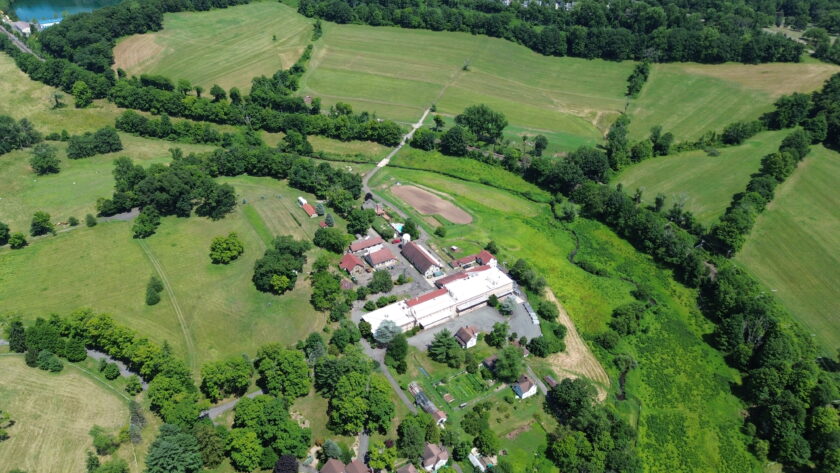
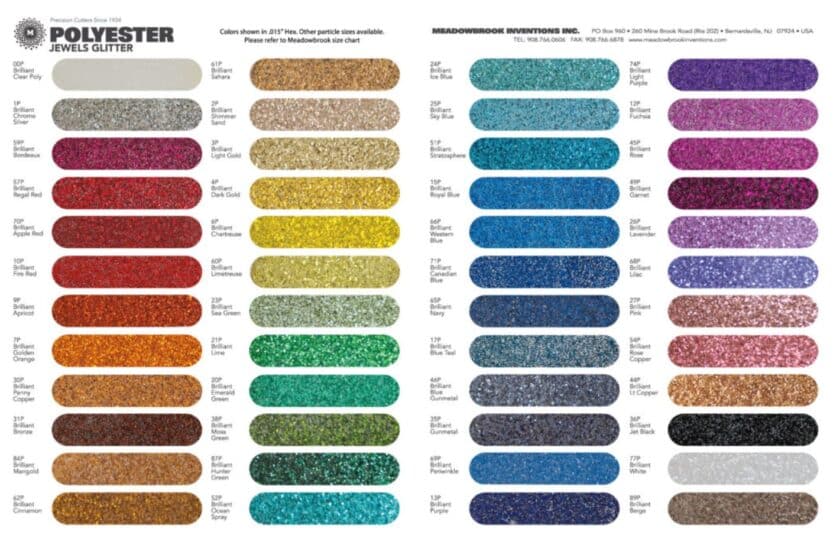
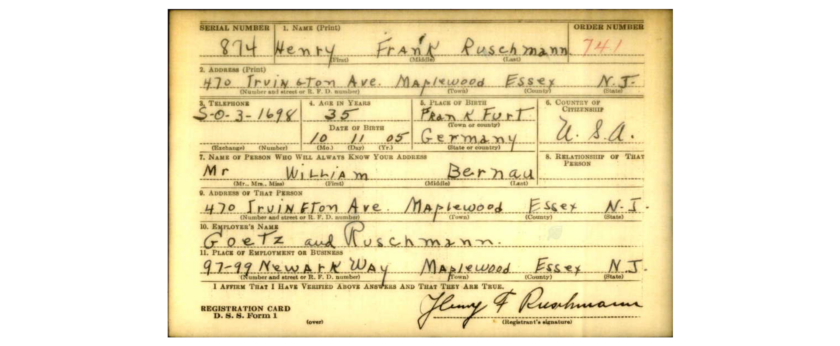

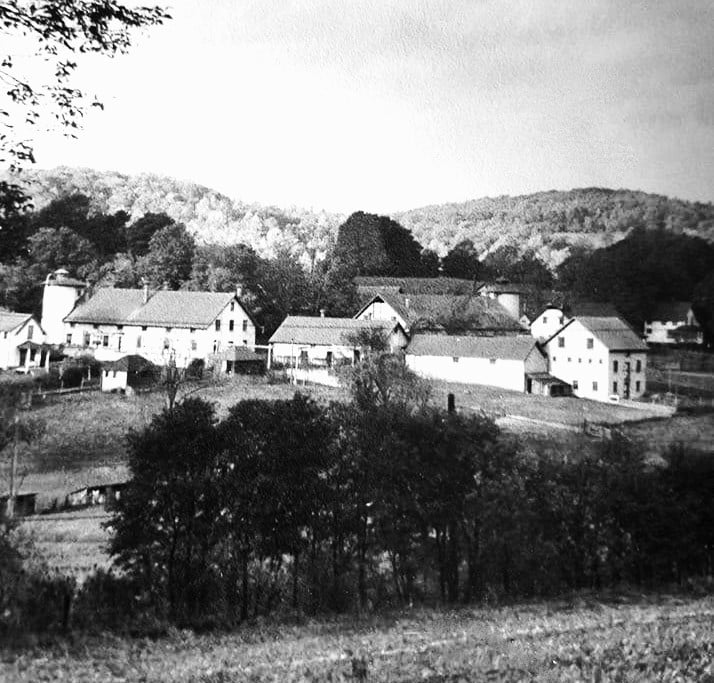
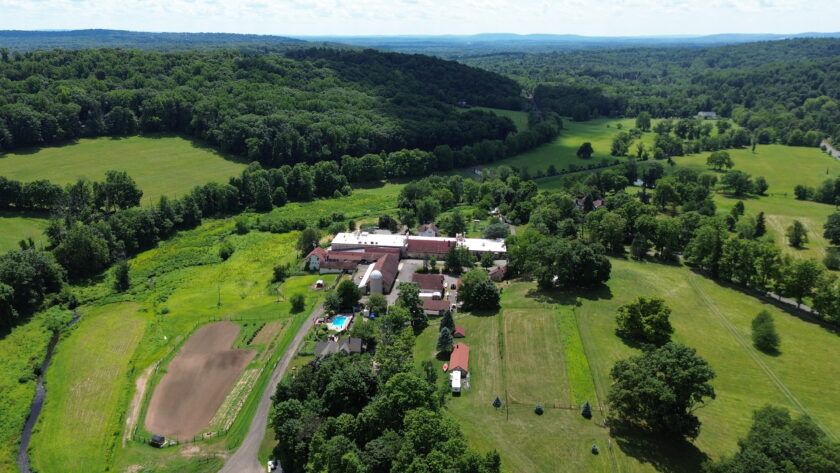
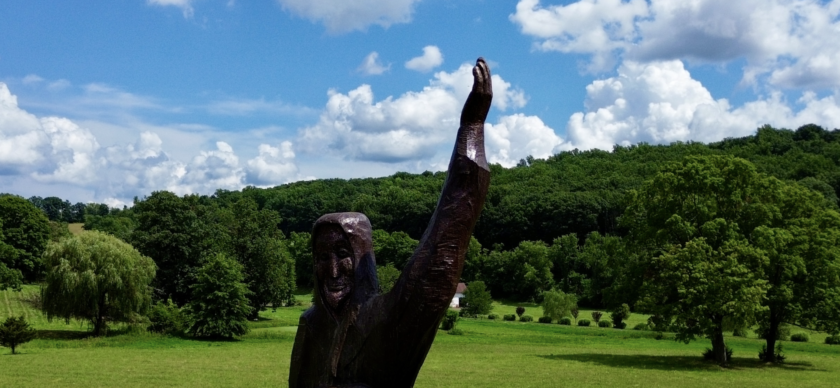




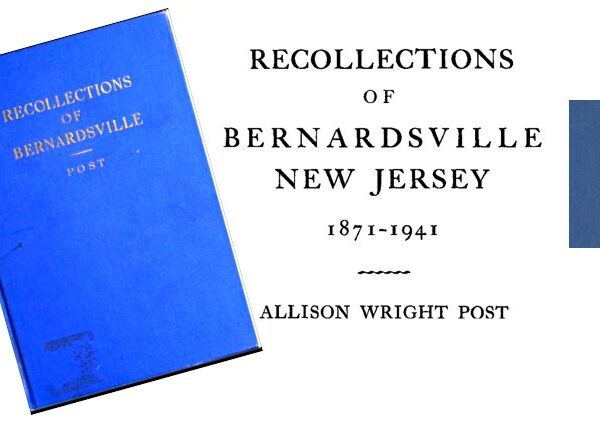

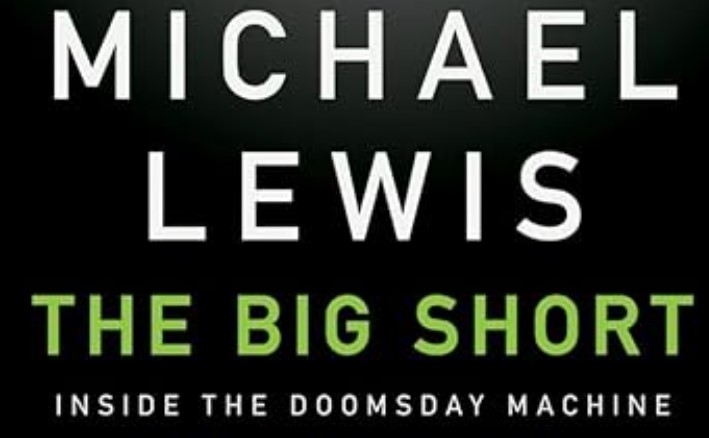


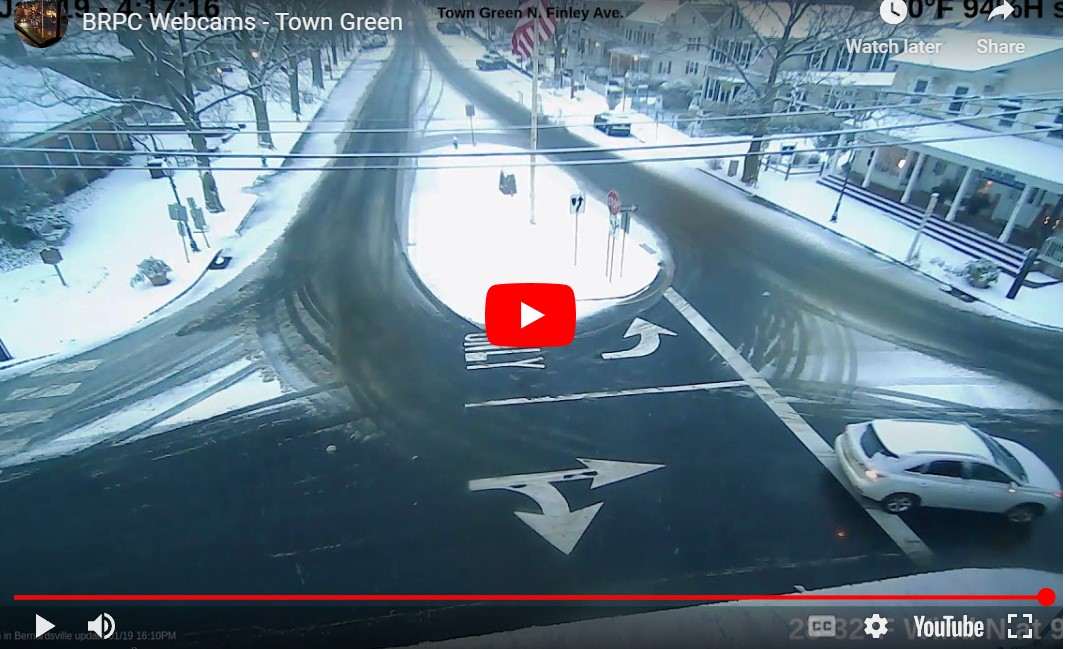

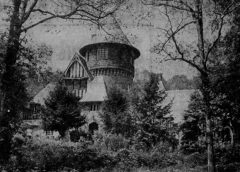

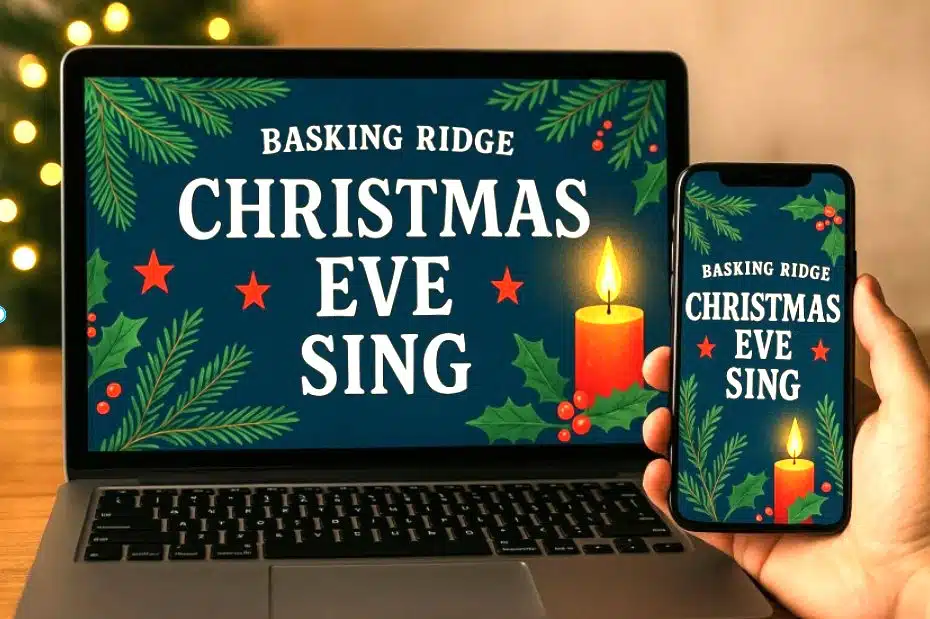


Glitter is actually a high-level national security concern. It’s in the paint on our cars and even on stealth bombers
Was there another brother, Rudy? We haven’t seen Henry in a year or two. Hope he is well. Love his cow bell.
I only just read the document on the development of Meadowbrook Farm. Roberta would, for sure, know everything as she runs the whole place now. When the now-late Peggy Hull Chalif, as Lindabury descendant, was entertaining her Texas goddaughter (a Dryden descendant) on a visit to her family’s former stomping grounds of the Somerset Hills, Roberta was kind enough to show us the Farm and pointed out the room which had been Peggy’s mother’s when she was the daughter of the house in the RVL time.
Peggy’s parents built their white brick house on Lindabury land nearer Far Hills on the foundations of the former Van der Veer farmhouse and nearby made the Chalif Dancing School (Bernardsville) where many of us — Gill Girls — took ballet and toe classes, made from the “Barn Studio.”
It is said in the family that Mrs Hull called the electrician to change a light bulb according to my memory. Mrs Hull’s Victorian sette with the needlepointed upholstery she did herself did is now in Frenchtown with Peggy’s daughter, Skye, my 8th cousin as a Durling or a Stillwell, according to Ancestry.
Does anyone know what happened to the two St Bernard’s boys, Jim and Joe Finnegan, sons of Lois Lindabury? They grew up further up Old Chester Road from my father’s house which was later the home of a Gill French teacher who married a man named Ross and then later owned a print and painting galllery on Claremont Road in Bernardsville. So many memories.
Of course! I grew up on the farm. My dad was head herdsman .My sister was born same day as Peter. I understand he lives in our house. Would love to see the updates on it. The punched out glitter rolls made great Christmas decorations.
Best article ever! I had no idea that while I so enjoy seeing the cows on this property as I drive by (Oklahoma girl that I am) I was also going by a glitter factory. Join that with the nudist colony in Basking Ridge and we are in an absolutely fabulous disco party area!! Who knew!! Thanks so much for your work.